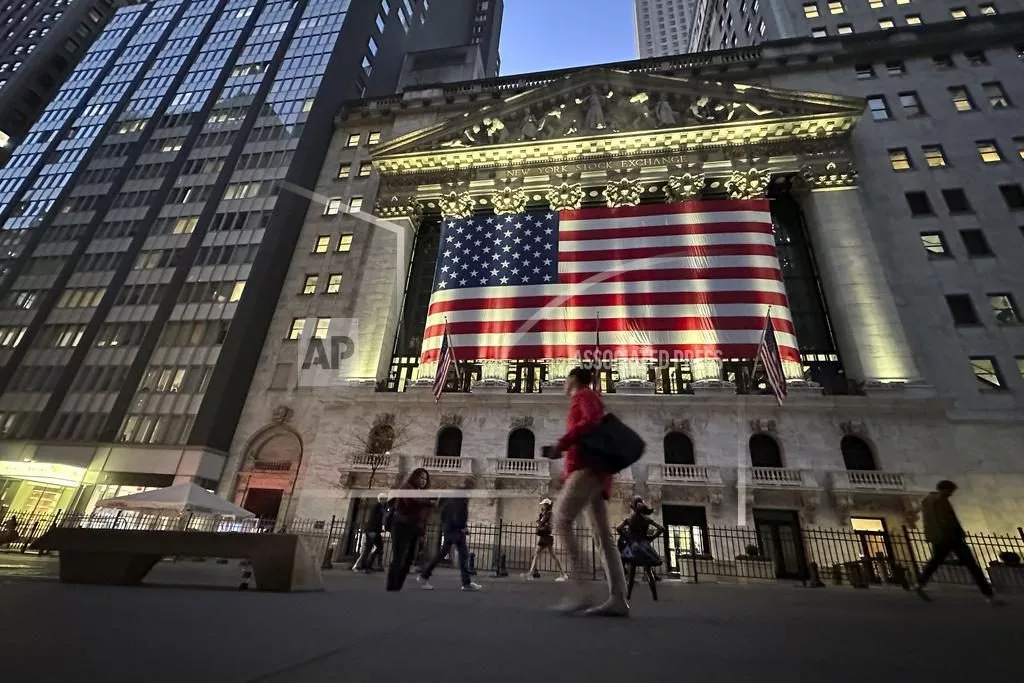NEW YORK (AP) — Some relief is flowing through financial markets worldwide Tuesday as stocks bounce to recover some of their historic losses since President Donald Trump dramatically raised the stakes in his trade war last week.
The S&P 500 was up 3.2% in early trading, though it still remains 15% below its record set in February. The Dow Jones Industrial Average was up 1,143 points, or 3%, as of 9:35 a.m. Eastern time, and the Nasdaq composite was 3.6% higher.
The bounce was global. Stock indexes rose 6% in Tokyo, 3.4% in Paris and 1.6% in Shanghai. The price of crude oil also pulled a bit higher after touching its lowest level since 2021 on Monday. Bitcoin steadied and was back above $79,000 after dropping toward $76,000 the prior day.
No big change is behind the move back upward, and analysts say more swings up and down are likely for markets in not only the days but also the hours ahead.
The big question remains centered on how long Trump will keep his stiff tariffs on other countries, which would raise prices for U.S. shoppers and slow the economy. If they last a long time, economists and investors expect it to cause a recession. But if Trump lowers them through negotiations relatively quickly, the worst-case scenario can be avoided.
Hope still remains on Wall Street that negotiations may be possible, and Japanese stocks led global markets after the country’s prime minister, Shigeru Ishiba, appointed his trade negotiator for talks with the United States. It was based on an agreement between Ishiba and Trump, Japanese officials said.
Of course, other countries are taking a more aggressive tack. China said it will “fight to the end” and warned of countermeasures after Trump threatened on Monday to raise his tariffs even further on the world’s second-largest economy.
But such a bounce back for global markets on Tuesday perhaps shouldn’t be a surprise. Stocks don’t go in one direction forever, and some of the best days in the market’s history have been clustered around some of its worst days.
The biggest gain for the S&P 500 since World War II was an 11.6% surge on Oct. 13, 2008, for example. That was during the depths of the Great Recession, when worries were high that the financial system was collapsing and the S&P 500 was in the midst of a nearly 57% plunge from its peak in late 2007 until its bottom in March 2009. A couple weeks later, the index had another one of its best days in history, soaring 10.8%.
That’s one of the reasons many financial advisers suggest not trying to time the market and selling stocks and other investments meant for the long term when nervous, because of the risk of missing out on such huge up days.
Brought to you by www.srnnews.com








